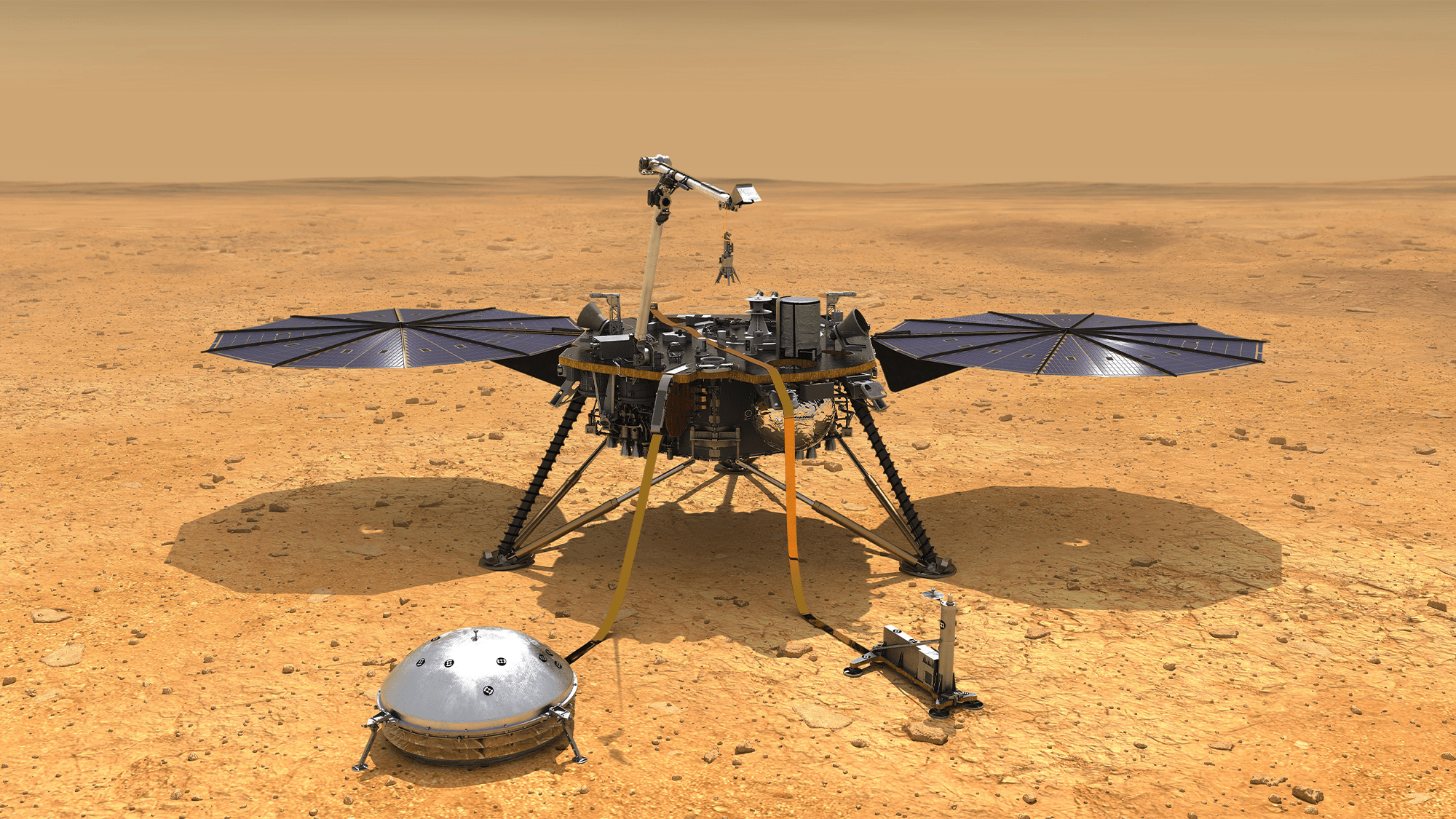

On one of the shortest and darkest days of the year, NASA’s InSight lander sent back what might be the rover’s final image. InSight is expected to lose contact with Earth any day now, as Martian dust builds up on the solar panels that power the 19-foot long planet explorer.
NASA reported that InSight did not respond to communications from Earth on December 18th and that the last time the mission was able to contact the spacecraft was on December 15. The lander may have officially reached its end of operations.
[Related: Saying goodbye to NASA’s InSight lander before it’s buried in Martian dust.]
Short for Interior Exploration using Seismic Investigations, Geodesy and Heat Transport, InSight launched in May 2018 on a mission to be the first robotic lander to look deep into the interior of the Red Planet to study its crust, mantle, and core. In November 2018, it survived “seven minutes of terror” and landed on the plains of Elysium Planitia.
While on Mars, it’s listened for meteorites impacting the planet and used a seismometer to measure “marsquakes.” On that front, InSight has more than delivered, as it’s detected over 1,300 marsquakes since 2018. On December 14, scientists announced that InSight detected a 4.7 magnitude marsquake on May 4 (Sol 1222 on Mars). This quake is the largest ever recorded on the Red Planet.
“The energy released by this single marsquake is equivalent to the cumulative energy from all other Marsquakes we’ve seen so far,” John Clinton, a seismologist at the Swiss Federal Institute of Technology in Zürich and co-author of the study, said in a statement. “Although the event was over 2,000 kilometers (1,200 miles) distant, the waves recorded at InSight were so large they almost saturated our seismometer.”
InSight also placed a heat probe called the “mole” into the Martian surface. Unfortunately, the heat probe was never able to get deep enough to achieve its ultimate goal.
[Related: 5 new insights about Mars from Perseverance’s rocky roving.]
Despite the mole not working as planned, InSight has sent back valuable data and crisp images back to Earth for over four years. Its powerful tools have helped scientists answer critical questions about how rocky planets both form and continue to evolve within our solar system and beyond.
The dust build up on InSight’s large, round solar arrays has limited the amount of power the rover can generate over time. It completed its primary two year mission in 2020 and NASA granted it an extension through December 2022. But only if it could make it that long, as it is generating only about 20 percent of the power it had when it landed.
“If I can keep talking to my mission team, I will — but I’ll be signing off here soon. Thanks for staying with me,” the rover wrote on Twitter.
InSight will be survived by NASA’s Perseverance and Curiosity rovers.

